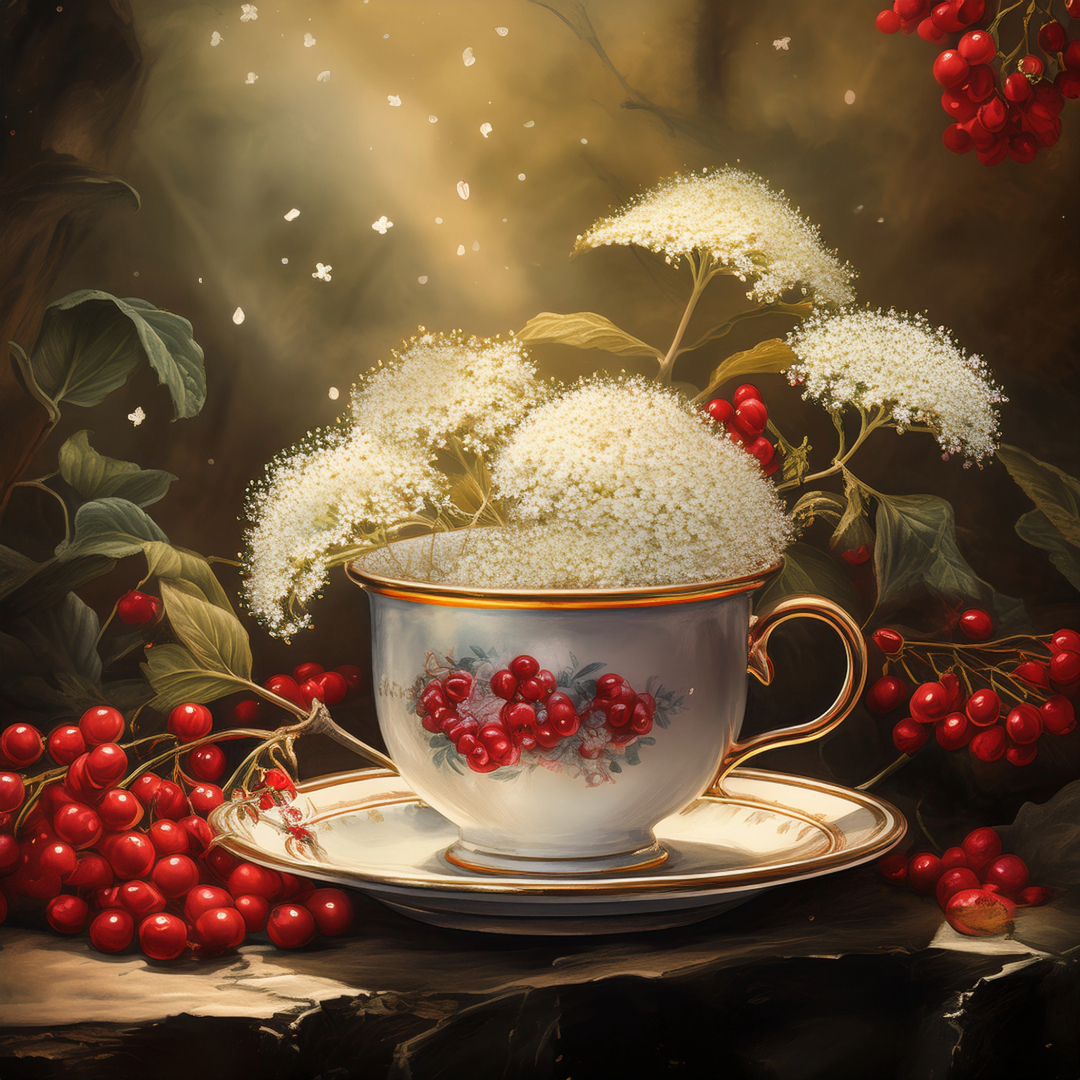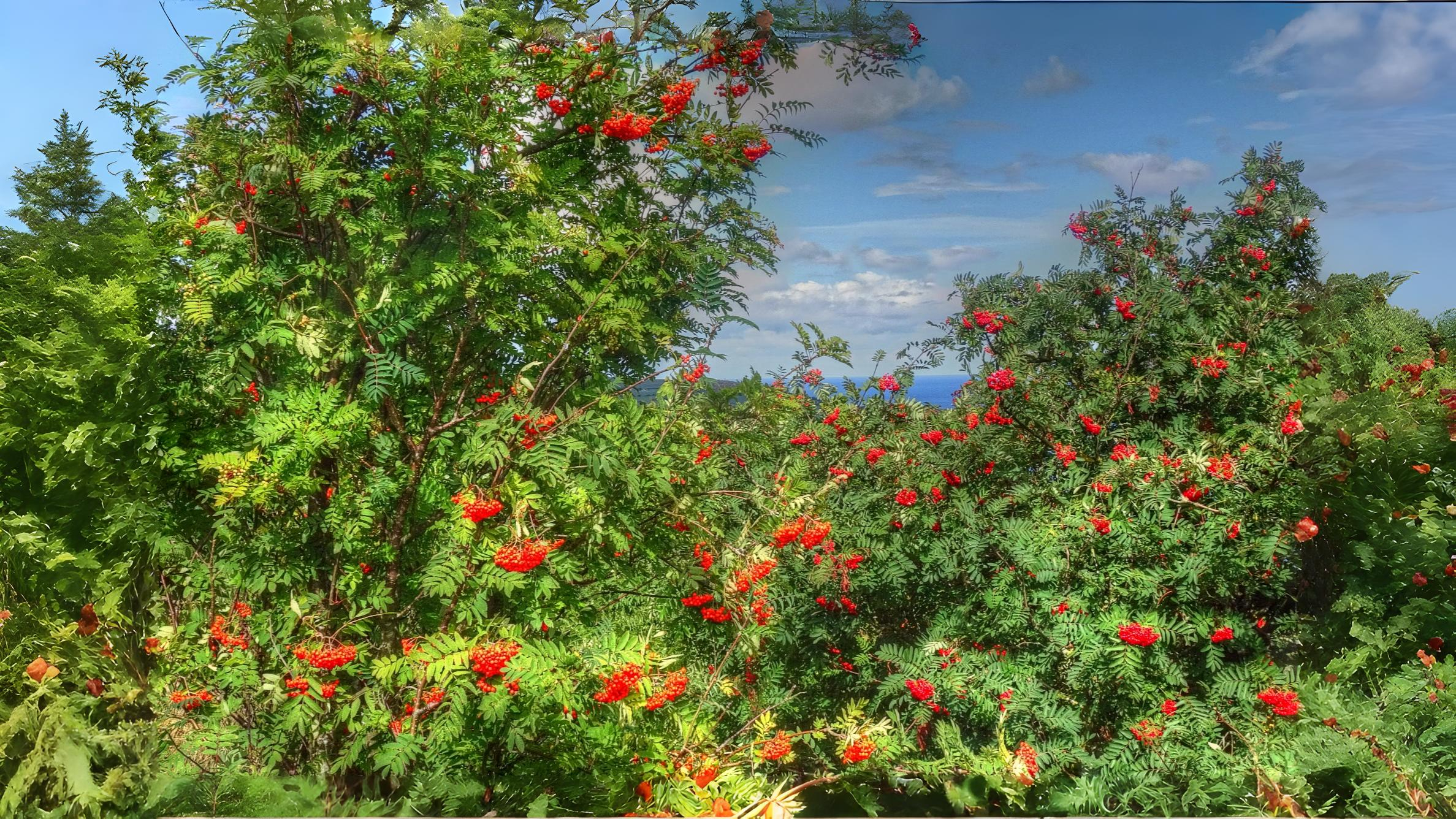Did you know London’s elder shrubs were once nature’s pea-shooters, their muscat-scented flowers flavouring wines and their leaves warding off flies? Or that the Duke of Argyll’s tea plant—a botanical blunder from the 1700s—still hides in wild corners, its berries capable of inducing bizarre symptoms? This month, gardens erupt with vanilla-scented wisteria and mock orange so potent it gave sailors headaches.
What rare Himalayan shrub thrives in Richmond Park? Which plant’s seeds create snowstorms of fluff in June? Return June 19 to uncover the scandals, mistakes, and sensory overload hidden in London’s shrubbery.
In chalky areas, nearly all the wild shrubs are now in flower i.e. dogwood, guelder rose, alder buckthorn, purging buckthorn, wild privet and elder. Elder Sambucus nigra is often found in the most neglected places. It was believed to grow where there was peace and tranquility. The flowers have a heady muscat scent which is found in many sweet wines and its hollow stems were once used as pea-shooters. Its aromatic leaves were also popular to decorate summer hats in order to deter flies. An unusual shrub found in the wild, but usually not far from a garden, is the Duke of Argyll’s tea plant Lycium barbarum.
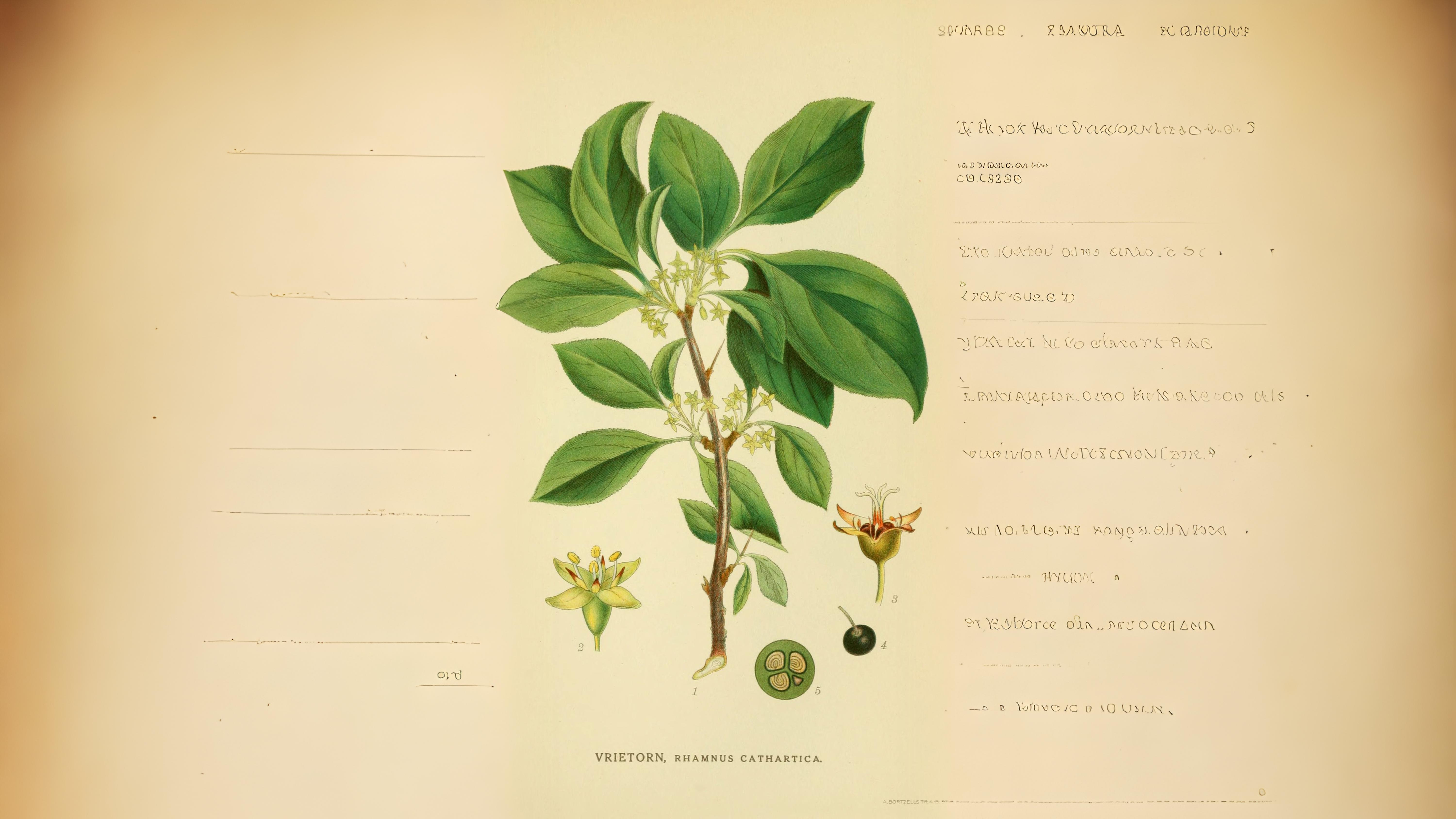
It has small purple flowers and very much a scrambling habit. The story goes that the third Duke of Argyll was sent this plant as well as a true tea plant and the labels were accidentally swapped. It was two generations of Argylls’ later before the mistake was realised, but the plant has kept its original, incorrect name. Poisonous red berries will come later on this shrub, which induce such unpleasant symptoms as disturbed eyesight, excessive urination and flushed skin.

Gardens provide a much richer array of shrubs this month. There are many new species and forms e.g. Ceonothus, Wisteria, Syringa, Cistus, Viburnum, Cornus, Hypericum, Escallonia, Deutzia, Berberis, Hebe and Philadelphus all of which are common. Chinese wisteria is said to have the best vanilla scent of all. Philadelphus or mock orange has one of the strongest scents to be encountered in the entire year; so strong, that when placed in a warm room it is known to induce headaches. It is also famous for throwing its orange blossom odour some distance. Captain Cook’s sailors were partial to a tea made from its flowers.

Besides the new rhododendrons and azaleas, there are also several new, interesting shrubs that tend to be found in collections e.g. Kolwitzia amabilis, Leptospermum , Abelia, Kalmia latifolia, Lapinus arboreus, Phlomis, Solanum, Enkianthus, Vaccinium and the pomegranate Punica. There are good shrub collections at Kew, Wisley and the Isabella plantation in Richmond Park.
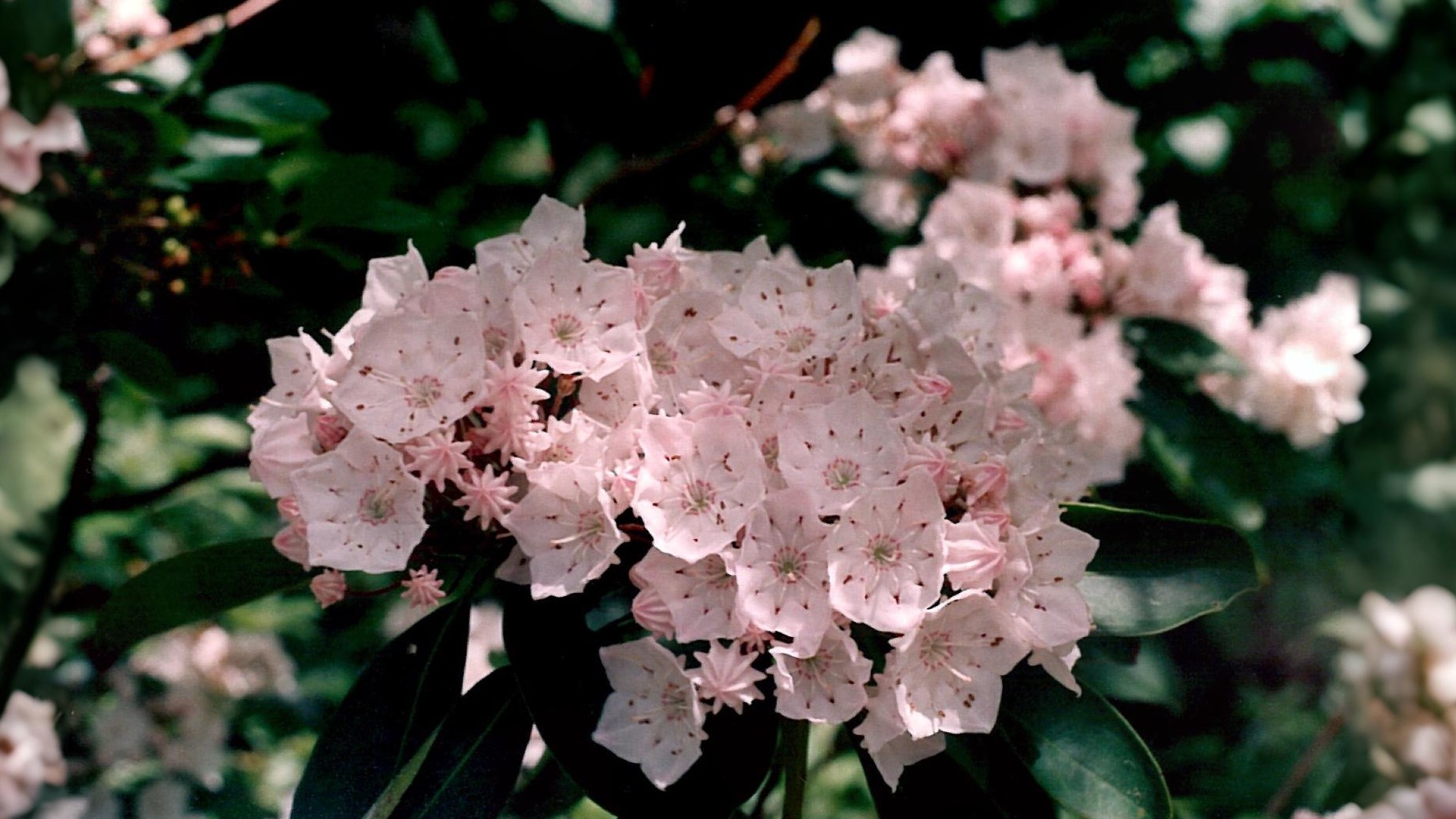
Rarer shrubs can also be found in all these places, as well as the Chelsea Physic garden and the Savill gardens near Windsor, e.g. Zenobia pulverulenta, Leucothoe, Gaultheria, Indigofera amblyantha, Prinsepia uniflora, Fabiana imbricata, Dipelta ventricosa, Schisandra, Lochroma, Styrax and one or two Stewartias.
By the middle of June, early flowering trees such as cherries may have ripening fruits that are being systematically removed by hungry blackbirds and woodpigeons. Small, green, prickly fruits are already forming on common horse chestnuts Aesculus hippocastanum, although any Indian horse chestnuts A. indica are still in full flower. Keys are developing on sycamores and many other maples, some with attractive pink edges. Poplars and willows are still shedding their fluffy, cotton seeds in their trillions and are sometimes so fecund the seeds completely cover nearby plants. Unripe green mulberries are quickly developing under mulberry leaves and hornbeam seeds are getting noticed everywhere.
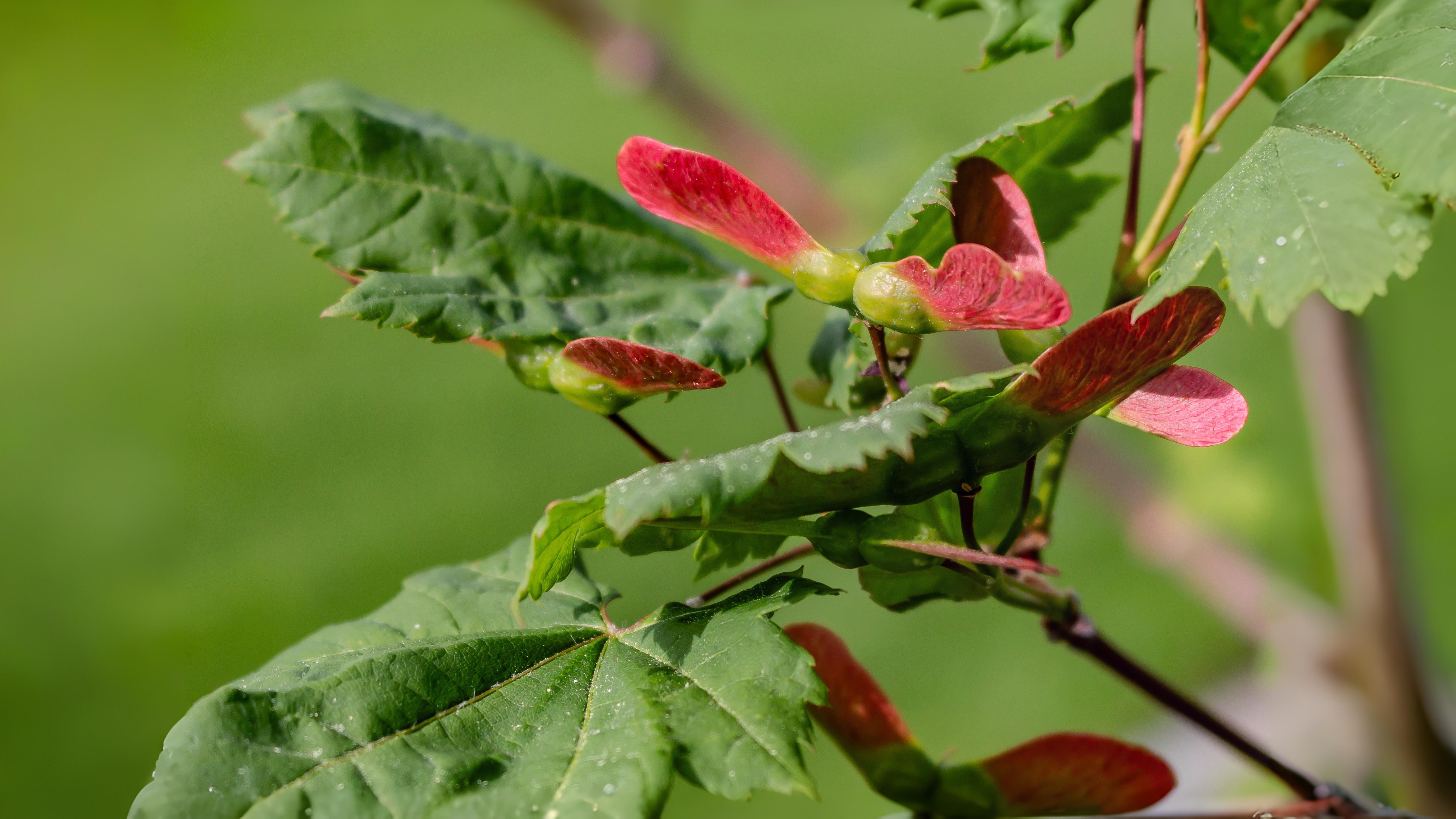
Rowan berries are also swelling, but again they are mainly still green. The long, dangling seeds developing on Caucasian Wingnuts now give the tree an almost tropical appearance. These trees hale from swampy areas in the Caucasus and Iran where they must make a spectacular sight en masse. On ash trees, fresh green ‘keys’ are starting to form. At this young stage, they used to be pickled and eaten. Figs are not yet edible, but are starting to colour up.
